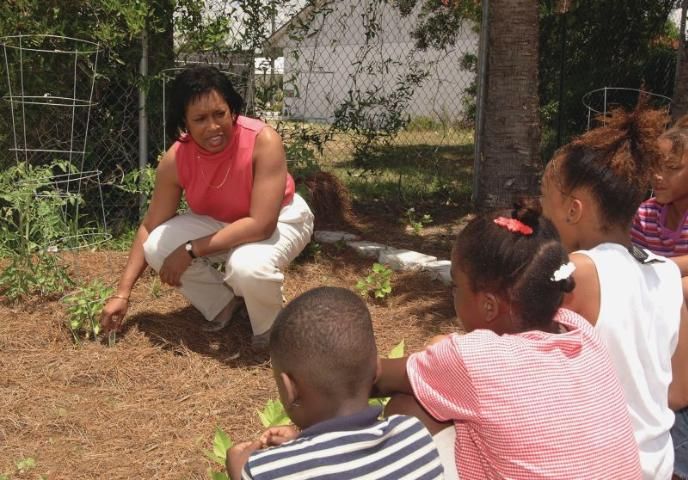If you were to close your eyes and picture your favorite teachers, you would likely find that each was very skillful in captivating your interest. Upon further study, you might find the interest produced resulted from your favorite teachers finding engaging activities or experiences that were related to the subject being taught, such as a nature walk when teaching about the environment or a scavenger hunt when teaching exploration. This method of creating interest into the classroom, called the Interest Approach, is very effective and widely applicable (Lancelot, 1929).
William Lancelot, the "Father of the Interest Approach," believed a learner's interests are important in learning and that those interests play a critical role in the development of a person's thinking ability (Lancelot, 1944). He purported a learner's "interest existing in any given topic flows into any other as soon as a connection between the two is seen" (Lancelot, 1929, p. 55). It is the responsibility of the educator to establish the connections between a learner's interest and new knowledge. These connections can be created through the use of the Interest Approach.
Methods for Creating Interest
Applying the Interest Approach requires some thought and effort from the educator. The general tips that follow can help you begin to apply the Interest Approach during your teaching activities.
- Be attentive to the development of interest the learners have regarding the subject or topic at hand.
- If the learners are already excited and interested in the topic, encourage their energy and enthusiasm for the subject to keep them interested.
- You must work to create interest if the learners are unsure or are genuinely not excited about the topic.

Credit: UF/IFAS
There are two initial phases when building interest. During the first phase, your efforts should be focused on generating new interests in the learners that relate to the topic under investigation. Relating the new subject to something the learners enjoy doing, such as an activity, grabs the learners' attention. After the initial interest has been developed, phase two should be directed towards enhancing the newly found interest of the learners. Adhering to the following rules will help you to create and strengthen interest (Lancelot, 1929).
Phase 1: Generating New Interests
- Actively engage the learners in discussion about what the subject has to offer. How can the subject be useful to them now and/or in the future? What value does the subject provide the learners?
- Concurrently, establish clear relationships between the new subject and related areas of knowledge and activities. For example, you could relate aerodynamics to constructing a paper airplane. In this way, you would be establishing a connection between something the learner already understands (making paper airplanes) and a new topic (aerodynamics).
- Describe the new skills and abilities the learners will acquire through learning the new subject. Be sure to establish a strong desire or 'feeling of need' in the learners.
Phase 2: Enhancing Interests
- Begin teaching the new subject once initial interest has been developed. Remember to continue to make connections with previous knowledge as new information or materials are introduced.
- Make certain to establish the importance of the topic as each new skill or ability is acquired by the learners. Learners will not be able to recall the new skills learned if a connection is not made between previous knowledge or experience and the current subject. Associating the new information with importance in the learners' lives is a great way to establish long-lasting connections.
- Develop the new skills and abilities of the learners to the best of the learners' abilities. Make their development a major part of the learning process by keeping them challenged and excited to learn.
- Continue to teach so that new knowledge and the development of new skills and abilities are always learned. Never teach for the sake of teaching; teach with a purpose and communicate the purpose.
- Throughout the instruction of the subject, persist in making connections of previous knowledge, skills, and abilities with new knowledge, skills, and abilities. Some of these connections should be left 'open' after the new knowledge is learned so that new connections can be made with future knowledge.
Using Natural Impulses
The following is a list of natural impulses that may be appealed to when teaching. Natural impulses not only help create interest, but also aid in the facilitation of the learning environment. Natural impulses should always be used when teaching (Lancelot, 1929). The following is a list of natural impulses with examples of how to incorporate them when educating.
- Activity—actively engaging the learners' minds
- Nature—an outdoor activity involving trees, animals, or the ocean
- Curiosity—creating a scavenger hunt when learning about exploration
- Wonder—taking a real or virtual field trip to the Grand Canyon
- Creativeness—learners painting a picture of the Grand Canyon
- Gregariousness—a group activity or project where the learners interact with one another
- Competition—a sport, game, or project where learners are competing against one another

Credit: UF/IFAS
Summary
A true educator is not one who makes learners memorize information. A true educator is one who is able to assimilate knowledge within the minds of learners. As a result, learners become sound, careful thinkers. The Interest Approach is not the only element in quality teaching, but it is an important educational tool. Creating interest in the minds of learners ensures the information learned is not only retained, but applied as well. As an educator, it is your responsibility not only to teach, but also to teach in a way that will make learners want to come back for more.
References
Lancelot, W. H. (1929). Handbook of teaching skills. John Wiley & Sons, Inc.
Lancelot, W. H. (1944). Permanent learning: A study in educational techniques. John Wiley & Sons, Inc.